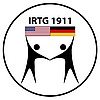B6 (2016 - 2019) – The impact of Tr1 cells in aged mice on susceptibility and vaccination efficacy in TB
A hallmark of aging is the progressive deterioration of immune function. This immune suppression increases susceptibility to infectious diseases and cancer, significant causes of morbidity and mortality in the elderly. A major contributing factor to this increased susceptibility is the declining function of T cell responses. The elderly population is predicted to grow to 2 billion people by 2050 according to WHO, increasing economic and health burdens dramatically. Thus, studies focused on understanding immune dysfunction in the aged are of very high significance to human health. Our and others prior work showed that regulatory FoxP3+ T cells accumulate with age and adversely affect adaptive immune function. Now, we have identified a population of interleukin (IL)-10 producing regulatory T cells present in the lungs of naive old mice that may undermine an efficient immune response to Mycobacterium tuberculosis (Mtb) infection and vaccination. In this project, we want to further characterize this cell population and identify the molecular mechanisms that are required for the development of these suppressive cells in order to generate novel post-exposure therapies and to improve vaccines.
Aims:
1. To identify the requirements for the development of IL-10-producing T cells with age
2. To determine whether vaccination efficacy is inversely correlated with the frequency of IL-10-producing regulatory T cells
3. To determine whether IL-10 underlies the suppressive effects of regulatory T cells






